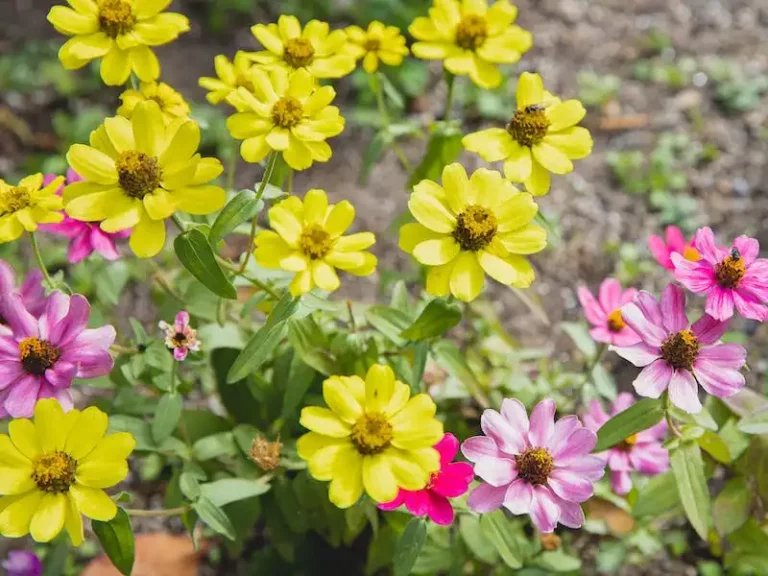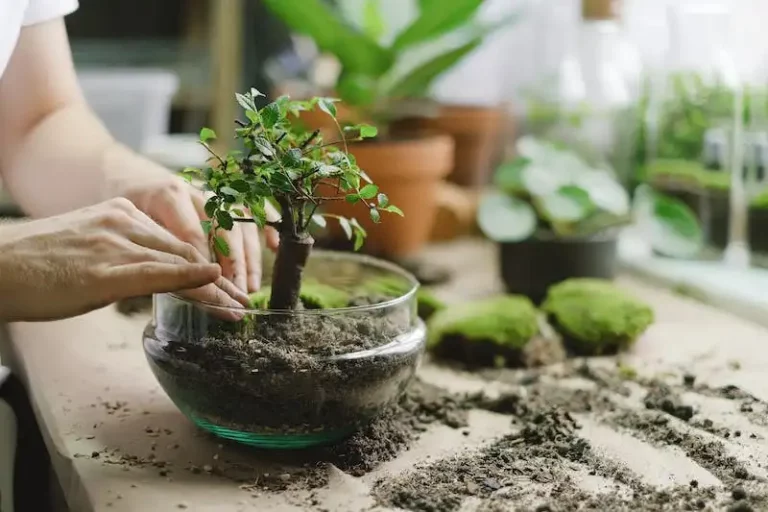Blackcurrants, scientifically known as Ribes nigrum, are big shrubs that are grown for their health benefits and the delicious fruit they produce. Cultivation of blackcurrants has a long history and is widespread in many regions around the world.
Blackcurrants are native to Europe and Asia and are well-suited to cold climates. They can be planted in the spring or fall, depending on the region and the specific variety. Blackcurrants prefer a sunny location but can tolerate some shade. They thrive in a variety of soil types, but prefer a well-drained, fertile soil.
Propagation of blackcurrants can be done through cuttings or layering. Blackcurrant cuttings are taken in fall or early winter and can be rooted easily. Layering involves bending down a lower branch of the plant and burying it in the soil, allowing new roots to form. This method is particularly effective in areas with a short growing season.
Blackcurrants have high nutritional value and are rich in antioxidants. They are also a good source of vitamins C and K. The fruit has a strong, slightly resinous odor and a rich, tart taste. Blackcurrant juice and wine are popular beverages, and the fruit is also used in jams, jellies, and desserts.
Why NZ Origin Regarding Blackcurrants Is Important
When it comes to growing blackcurrants, we understand the importance of their origin. Although blackcurrants can be grown in various parts of the world, those grown in New Zealand have a distinct advantage.
New Zealand is known for its pristine growing conditions, which contain the right combination of climate, soil, and sunshine to produce the best blackcurrants. The country’s Zealand variety of blackcurrants is straight from the land of growing berries, giving it an edge over common varieties found elsewhere.
The blackcurrants from New Zealand not only taste amazing but also offer a range of health benefits. Their high level of antioxidants, vitamins, and minerals make them an excellent addition to any diet. Additionally, the New Zealand agricultural practices ensure that these blackcurrants are grown using cutting-edge techniques that result in high-quality berries.
One of the key benefits of growing blackcurrants in New Zealand is their ability to withstand winter conditions. The buds of the blackcurrant bushes are sheltered, allowing them to survive even the coldest of winters. This is important for ensuring a successful harvest, as the blackcurrant bushes need to be pruned and kept in optimal conditions leading up to the harvest.
In addition to being hardy, New Zealand blackcurrants also have a unique fruity flavor. The combination of New Zealand’s soil composition and climate produces blackcurrants that are richly flavored and have a distinct aroma. The blackcurrants grown in New Zealand truly stand out from the rest.
For those concerned about the origins of their blackcurrants, New Zealand is the ideal choice. The country’s strict agricultural practices ensure that the blackcurrants are grown without the use of harmful chemicals, resulting in a safer and more environmentally friendly product.
In conclusion, the NZ origin regarding blackcurrants is important for several reasons. The unique growing conditions, high-quality berries, and commitment to sustainable agriculture make New Zealand blackcurrants the best choice for growers and consumers worldwide. So, when it comes to blackcurrants, choose the ones grown right here in New Zealand.
Here are some common FAQs related to NZ origin and growing blackcurrants:
- Q: What makes New Zealand blackcurrants the best in the world?
- A: The combination of pristine growing conditions, cutting-edge agricultural techniques, and unique fruity flavors sets New Zealand blackcurrants apart from the rest.
- Q: When is the best time to plant blackcurrant bushes in NZ?
- A: Blackcurrant bushes in NZ are typically planted in November, followed by a short growing season before the harvest.
- Q: How should blackcurrant bushes be pruned in NZ?
- A: Blackcurrant bushes in NZ should be pruned to keep them in a compact and sheltered shape, allowing the buds to survive during winter.
- Q: Do blackcurrant bushes in NZ need to be pollinated?
- A: No, blackcurrant bushes in NZ are self-pollinating, which means they do not require external pollination.
- Q: What health benefits do blackcurrants from NZ contain?
- A: Blackcurrants from NZ are known for their high antioxidant content, vitamins, and minerals, which contribute to overall health and well-being.
The source of the fruit makes a big difference for blackcurrants
The cultivation of blackcurrants is an important process that requires careful selection of the plants. The source of the fruit, whether it is grown from rooted cuttings or seedlings, can greatly influence the quality and health of the blackcurrant bushes.
Blackcurrants, scientifically known as Ribes nigrum, are a type of shrub that is native to Europe and Asia. They are closely related to the gooseberry and were first cultivated in northern Europe. Today, blackcurrants are commercially grown in many parts of the world, including the northern hemisphere.
When selecting blackcurrant plants for cultivation, it is important to choose varieties that are well-suited for your specific region and soil conditions. Blackcurrants are adapted to a wide range of soils, but they grow best in well-draining soils that are rich in organic matter and have a pH level between 5.5 and 7.0.
The source of the blackcurrant plants, whether they are grown from rooted cuttings or seedlings, plays a crucial role in their ability to thrive and produce healthy fruit. Rooted cuttings are clones of parent plants and are generally more reliable in terms of fruit quality and disease resistance. Seedlings, on the other hand, can be less predictable and may exhibit a wide range of characteristics.
Blackcurrants are known for their high nutritional value and are packed with vitamins and minerals. They are rich in vitamin C and contain high levels of antioxidants, which are beneficial for overall health. Consuming blackcurrants can help strengthen the immune system and improve cardiovascular health.
Blackcurrant bushes can be prone to certain pests and diseases, such as aphids and powdery mildew. Regular monitoring and proper care are essential to prevent infestations and address any issues that may arise. Following guidelines for pest control and providing the plants with adequate sunlight, water, and nutrients can help ensure their health and productivity.
In conclusion, the source of the fruit plays a significant role in the cultivation of blackcurrants. Selecting the right varieties and obtaining plants from a reliable source is crucial for ensuring healthy and productive blackcurrant bushes. Whether you’re a commercial grower or simply planting blackcurrants in your garden, paying attention to the source of the fruit can make a big difference in the overall success of your blackcurrant cultivation.
New Zealand blackcurrants are at the cutting edge of nutritional science
Blackcurrants, scientifically known as Ribes nigrum, are a type of fruit that have been cultivated in New Zealand for decades. These berries have become increasingly popular in recent years due to their extensive nutritional benefits and potential health advantages. As growers, we are constantly striving to stay at the forefront of research and development in order to provide the highest quality blackcurrants to consumers worldwide.
One of the main reasons why New Zealand blackcurrants are considered to be at the cutting edge of nutritional science is due to their high content of essential minerals and vitamins. These berries are rich in antioxidants, particularly vitamin C, vitamin E, and anthocyanins. These compounds are known for their potential health benefits, such as boosting the immune system, reducing inflammation, and protecting against oxidative stress.
In addition to their nutritional capacity, New Zealand blackcurrants are also highly regarded for their cultivation practices. The unique climate and environment of New Zealand’s South Island provide optimal conditions for blackcurrant growth. The nutrient-rich soil, combined with the southern hemisphere’s long daylight hours during the growing season, contributes to the production of high-quality blackcurrants.
When it comes to blackcurrant cultivation, proper planting and handling techniques are crucial. Growers in New Zealand take great care in selecting the best variety of blackcurrant plants and ensuring they are properly rooted and sheltered. This attention to detail helps the plants thrive and produce berries of exceptional quality.
As blackcurrants are prone to certain pests and diseases, safety measures such as regular monitoring and the use of organic fertilizers are implemented to prevent infestations. By taking proactive measures, New Zealand growers are able to produce blackcurrants that are not only nutritionally rich but also free from harmful substances.
The origin of New Zealand blackcurrants can be traced back to Eastern Europe and Asia. They were introduced to New Zealand in the late 19th century and have since become a common sight in the country’s gardens and commercial plantations. Due to the high demand for New Zealand blackcurrants, cultivation has expanded, making them one of the primary sources of blackcurrants in the world.
In conclusion, New Zealand blackcurrants are truly at the cutting edge of nutritional science. The combination of their amazing nutritional benefits, careful cultivation practices, and commitment to safety and quality make them a sought-after fruit globally. Whether you are a fervent gardening enthusiast or just someone who appreciates the taste and health advantages of blackcurrants, New Zealand blackcurrants are a top choice.
The key to the amazing health benefits of New Zealand Blackcurrants lies in their environment as a result of natural growth and cultivation in nutrient rich soil
Blackcurrants, also known as Ribes nigrum, are a variety of currant that grows in a far-removed and sheltered environment in New Zealand. Their growth in this environment makes them very special and unique. The cold and high UV index, combined with the nutrient-rich soil, is what gives New Zealand Blackcurrants their big value.
The rich and warm soil in which these blackcurrants grow result in berries that are packed full of nutrients and antioxidants. The plants thrive in this environment, making them ideal for cultivation and propagation. The cooperative weather conditions and nutrient-rich soil ensure that the plants grow straight and produce high-quality fruits.
Propagation of blackcurrant plants usually involves cutting and planting them. The cuttings from the mother plants are carefully chosen to ensure the best genetic origin and quality. This process takes around 2-3 years of growth before the new plants can start producing blackcurrant berries.
Most importantly, the natural growth and cultivation of New Zealand Blackcurrants result in berries that are rich in anthocyanins and other beneficial compounds. Anthocyanins are responsible for the deep, dark color of the blackcurrants and have been linked to numerous health benefits, including anti-inflammatory and antioxidant properties.
In summary, the amazing health benefits of New Zealand Blackcurrants can be attributed to their natural growth and cultivation in nutrient-rich soil. The environmental factors, such as the cold and high UV index, along with the cooperative weather conditions, contribute to the superior quality and value of these blackcurrants. So next time you enjoy some blackcurrant berries, remember that their amazing health benefits are the result of their unique environment.



